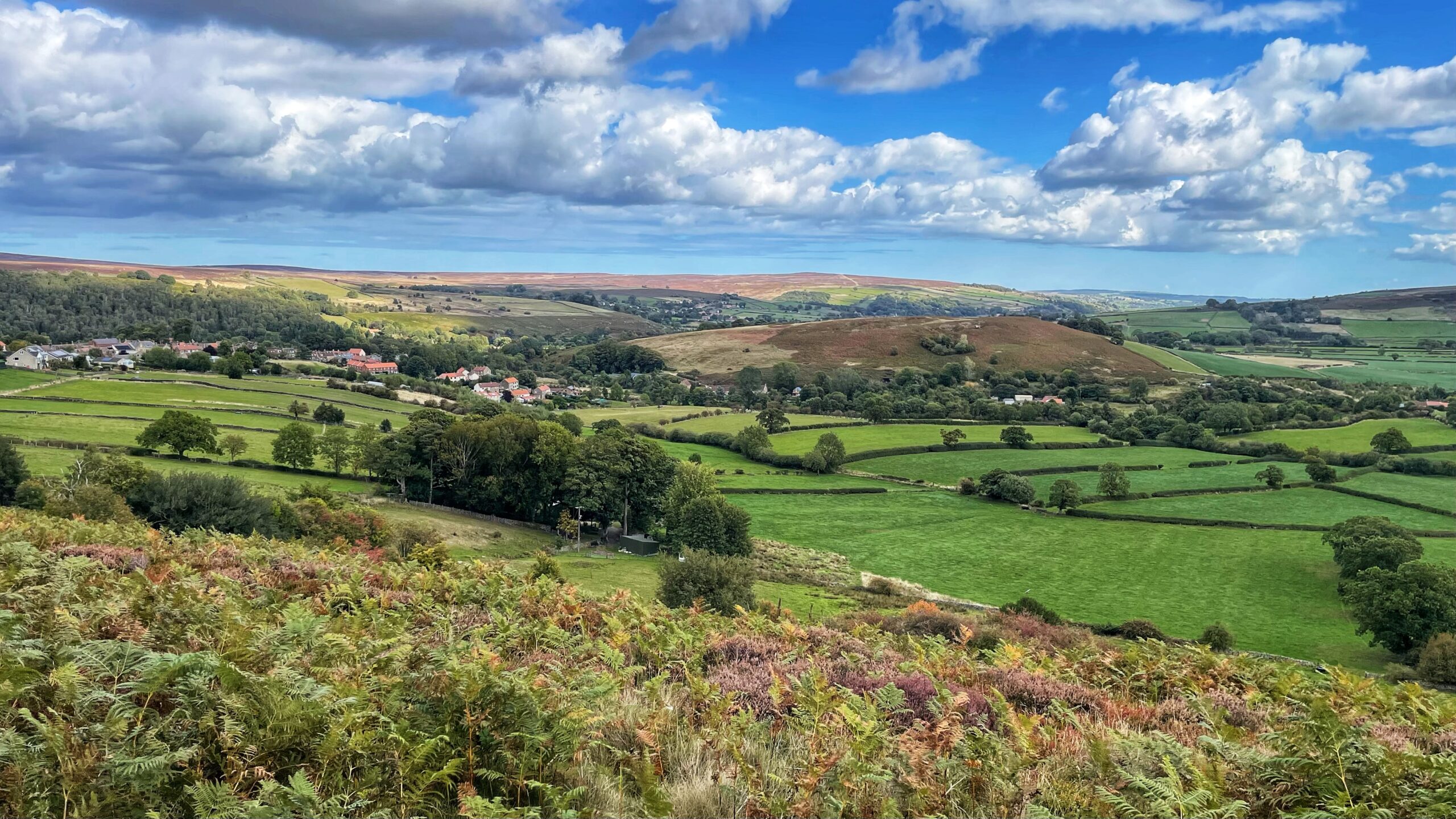From Castleton Rigg above Danby Dale, the eye follows the curve of the valley. To the right stands The Howe, and to the left, on the lower ridge lies Castleton, a village whose name carries the echo of a medieval stronghold. The castle itself rose on Castle Hill around 1089, and with it came cottages and workshops, likely clustering around Primrose Hill. What began as a fortress settlement eventually became the beating heart of Upper Eskdale, alive with fairs and markets where wool, cattle and cheese changed hands1Conservation Area Character Appraisal and Management Plan – Castleton. NYMNP. 2023..
Among all these local trades, it was cheese that truly put Castleton on the map and earned it a place in history. The fair had once been held at Whitby, but in 1872 it was drawn here through the persistence of Thomas Kitching, a Guisborough man born in 1842. He had learned his trade in Mr Rodham’s grocer’s shop, moved on to Mr Broadhead’s store in Castleton, and after seven years opened his own shop on the High Street. He married Christiana Moore of York, once governess to Canon Atkinson’s children at Danby Parsonage2Reference: Round and About The North Yorkshire Moors – A Glimpse of the Past By Tom Scott Burns. Page 8. M.T.D. Rigg Publications. 1989..
In those years Eskdale farmers produced about two tons of cheese each, their work measured out in solid rounds weighing between four and seven pounds. Kitching gathered them in, sometimes hundreds at a time. In 1906 he bought seven hundred at the fair and went on to supply cheese for the tables of Queen Victoria and Edward, Prince of Wales.
The fair transformed the village. Wagons rolled in from every dale, their floors and sides padded with straw, their loads packed tight with rounds of every size. On fair day the High Street became a long procession of carts piled high with cheese, the air filled with the smell of straw and dairy. For decades it was the highlight of the year.
But change came. With the creation of the Milk Marketing Board, farm cheese-making ebbed away, and by 1946 the craft that once filled Castleton with wagons and laughter had almost vanished, leaving behind only memory and story.
- 1Conservation Area Character Appraisal and Management Plan – Castleton. NYMNP. 2023.
- 2Reference: Round and About The North Yorkshire Moors – A Glimpse of the Past By Tom Scott Burns. Page 8. M.T.D. Rigg Publications. 1989.

Leave a Reply